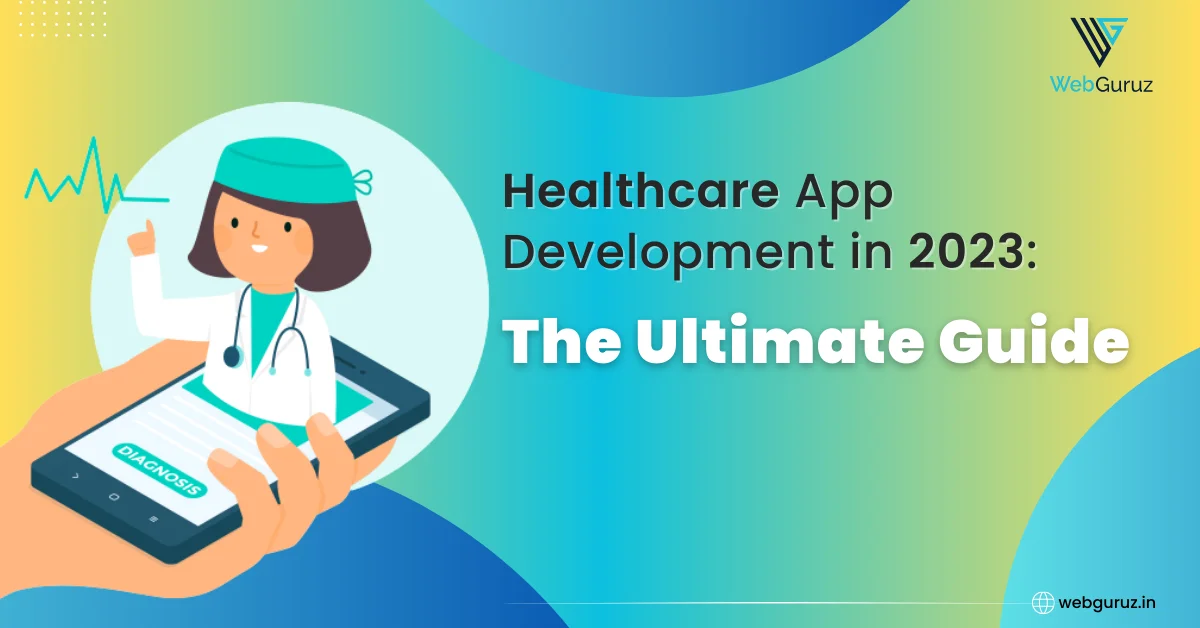
Healthcare App Development in 2023: The Ultimate Guide
The COVID pandemic made history, not just in our lives but in the health apps market as well. As per the U.S. Digital Health Market Size Forecast 2014-2024 by Statista.com, the digital health market in the US reached 90 billion U.S. dollars in 2022. Of these 90 billion U.S. dollars, approximately 44 billion U.S. dollars were generated by the mHealth submarket alone.
If we consider some other statistics, we’ll know that there were 54,546 healthcare and medical apps available on the Google Play Store, a small decrease compared to the previous quarter. However, between the beginning of 2020 and the end of 2021, the number of mHealth apps available to Android users via the Google Play Store kept growing and breached the 65,300 thousand mark during the last quarter of 2021.
On the Apple App Store, however, there were 41,517 healthcare and medical apps available. This number, despite being down by 20 percent compared to the previous quarter is still significant. The number of mHealth apps available to iOS users kept growing and reached its peak of almost 54,000 apps in the first quarter of 2021.
This shows the growing demand for mobile health apps in the market which is expected to reach 300 Billion U.S. Dollars by the year 2025. So, if you are still wondering whether you should build a healthcare app, now is the time.
This article will explore the benefits of healthcare app development, the requirements for developing such apps, and the cost involved. We will also delve into the different types of healthcare apps and discuss the mobile app development lifecycle for building a successful healthcare app in 2023.
Healthcare Apps- A little background
Healthcare has witnessed a significant transformation due to the advent of technology. One of the most remarkable advancements that have contributed to this is the development of healthcare apps.
Healthcare apps are software programs that perform tasks such as sending reminders about taking medicine, keeping patients and their caretakers up to date about recent advancements, educating them about healthcare topics, and enabling patients to record health-related data by taking regular measurements. These apps can be used on smartphones and tablets, etc. Other IoT devices like smartwatches and wearables also support certain healthcare apps and can be used to track health-related information. From monitoring vital signs to scheduling doctor appointments, healthcare apps have made healthcare services more accessible and convenient. In fact, they have revolutionized the way we access and manage our health-related information.
Healthcare Apps- Types
There is a whole range of healthcare apps catering to three main audiences: Patients, Providers, and Administration Staff. Now, there are different types of apps based on their functionality within each of these categories.
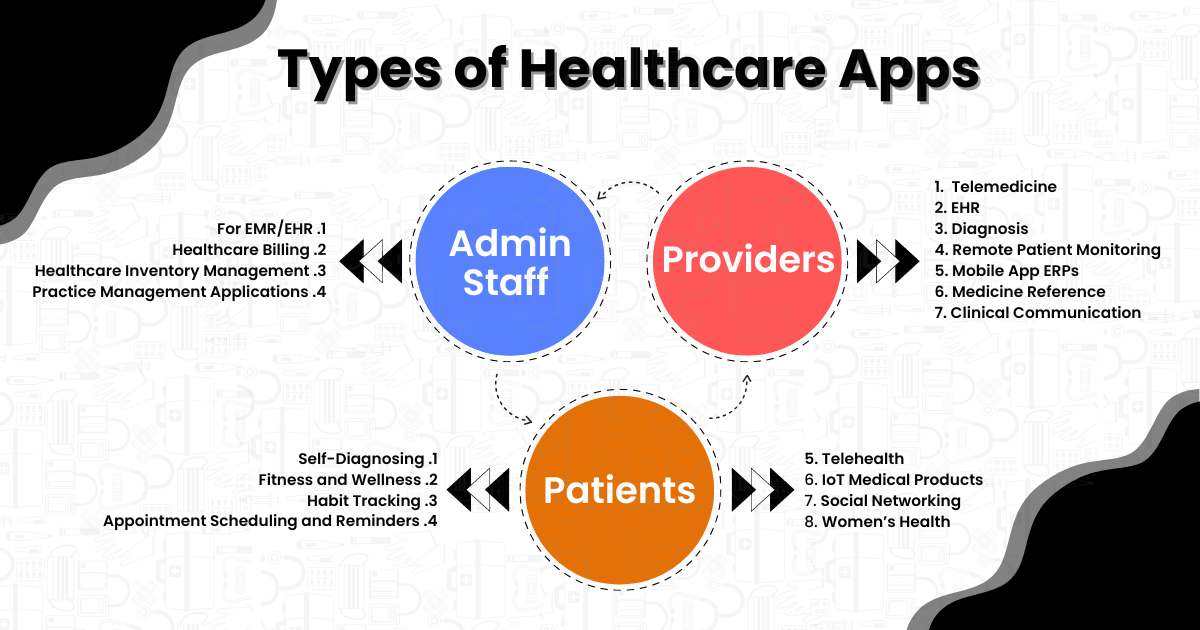
Healthcare Mobile App for Patients
- Self-Diagnosing
- Fitness and Wellness
- Habit Tracking
- Appointment Scheduling and Reminders
- Telehealth
- IoT Medical Products
- Social Networking
- Women’s Health
Healthcare Mobile App for Providers
- Telemedicine
- EHR
- Diagnosis
- Remote Patient Monitoring
- Mobile App ERPs
- Medicine Reference
- Clinical Communication
Healthcare Mobile App for Admin Staff
- For EMR/EHR
- Healthcare Billing
- Healthcare Inventory Management
- Practice Management Applications
So, there are a lot of options to choose from when you are looking to build a healthcare app in 2023.
Benefits of Healthcare App Development
Healthcare app development has numerous benefits for both healthcare providers and patients. Here is a closer look at some of them:
Improved Access to Healthcare Services
Healthcare apps provide users with 24/7 access to medical information, allowing them to conveniently schedule appointments, access test results, and communicate with healthcare professionals.
Enhanced Patient Engagement
With healthcare apps, patients can actively participate in their healthcare journey. They can set reminders for medication, track their health parameters, and receive personalized health recommendations.
Efficient Health Monitoring
Healthcare apps enable users to monitor their vital signs such as heart rate, blood pressure, and glucose levels. This real-time data can be shared with healthcare providers for accurate diagnosis and treatment planning.
Seamless Communication
Healthcare apps facilitate secure and seamless communication between patients and healthcare providers. Users can engage in virtual consultations, seek advice, and clarify doubts without physical visits, thereby saving time and effort.
Mental Health Support
The rising importance of mental health has led to the development of mental health apps. Mental Health App Development can help you get apps that offer meditation techniques, stress management tools, and access to licensed therapists, promoting overall mental well-being.
What are the healthcare app development requirements?
Unlike entertainment or other apps, healthcare-related apps go through stringent approval processes. Since the app is related to the medical niche, it should meet the HIPAA guidelines, comply with the GDPR standards and match the privacy and security regulations depending on the market you are looking to target.
HIPAA guidelines apply to any medical software that records, stores, and distributes healthcare-related information. And, if you are targeting the American market, you will need to ensure that your app meets the same.
GDPR standards, on the other hand, are applicable to all software that’s being launched in the European Union. Introduced in 2018, these rules govern the collection, storage, and use of personal data by all software.
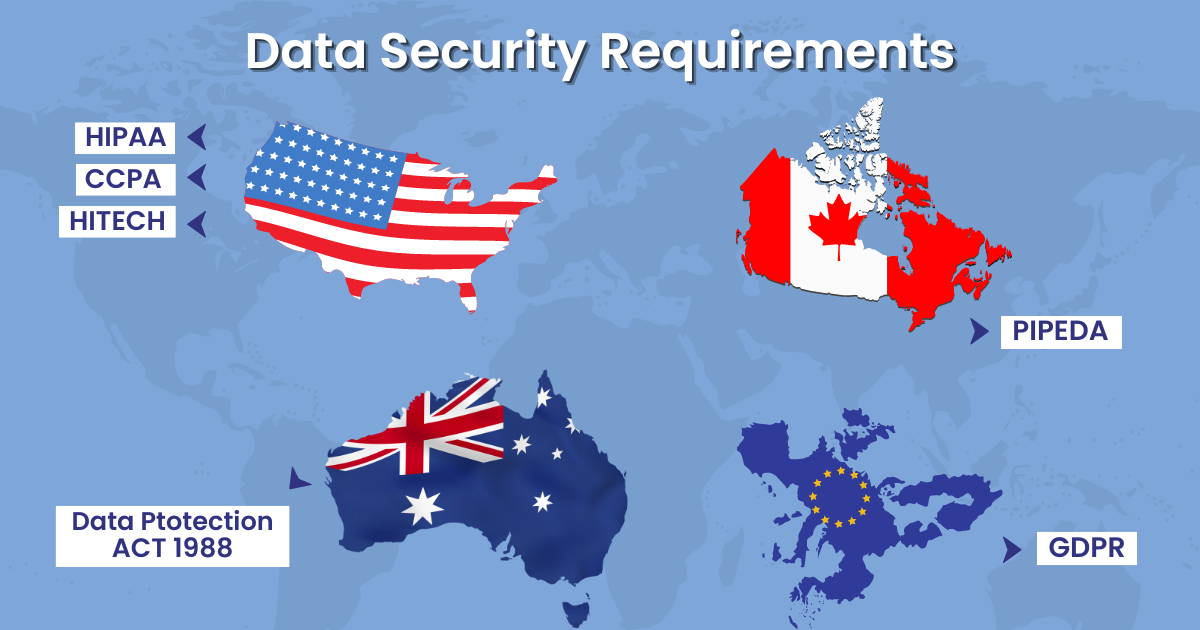
In addition to these laws, there are some other regulations as well. To name a few, there is the PIPEDA in Canada, and DATA Protection Act in the UK. Furthermore, there are Apple’s Human Interface Guidelines for CareKit and HealthKit, Android.os.health documentation, IEC 62304, ISO27001, SOC2 Type 2, MFi Program, HITECH Act, and other standards as well.
All of these laws and regulations are dedicated to safeguarding a person’s confidential information against unwarranted usage, storage, and distribution. Creating an app in line with the applicable data security laws is critical to ensuring approval and a seamless launch.
Another crucial point is creating a safer payment interface. A PCI SSC organization can assist with complying with the required aspects and receiving a license so you can proceed with the licensing easily.
What are some features a Health Application must have?
In order for your healthcare app development efforts to succeed, you will need to ensure that it has features to engage users and offer tangible benefits. You can decide which features to add based on the purpose behind creating the healthcare app. Choose whether you want to build a mobile medical solution for fitness, glucose tracking, or patient monitoring, and accordingly work on integrating essential features.
Here are some basic features that every health app must have:
Integrations
Medical apps have to deal with patient data on a regular basis. From storing confidential health-related data and transferring it to other medical systems to saving payment-related information, there needs to be a place to integrate everything. And services like HealthKit, Samsung Health, and Google Fit help in just that manner.
User Profiles
Data saved in the app should be organized in the form of user profiles that should be editable at every point. Doctor and Patient profiles must include sufficient information about them so both of them can navigate through the complex decision-making and medical service landscape easily.
Telemedicine
Modern healthcare apps should have the feature to connect patients with healthcare providers in real time. This will help them connect with providers remotely and seek medical advice remotely. This is particularly helpful for bedridden and specially-abled patients.
Reminders
Mobile apps excel at keeping patients up-to-date on medical prescriptions and medicine consumption schedules. By sending alerts and notifications that are not just time but location-based, these features in health apps can prove really helpful.
Compliance
Personal health information and medical data must be kept secure at all times. This is why all such apps must be created in line with regional data privacy and protection laws like HIPAA, GDPR, PIPEDA, and Data Protection Act, etc. The team at Webguruz ensures that the entire healthcare app development process is carried out in line with data privacy and protection regulations.
Health Monitoring
These apps focus on tracking and monitoring vital health parameters such as heart rate, sleep patterns, calorie intake, and exercise routines. They can synchronize with wearable devices and provide detailed analytics and personalized insights.
Healthcare App Development Cost
If you Google the phrase, you will get different responses based on your requirements and the features you wish to add to the same. More the features, the higher the cost. In order to determine the final cost of a healthcare app, you will need to determine the requirements which might include Front End and Back End Developers, DevOps, Business Analysts, Compliance Experts, UI/UX Experts, Quality and Testing Experts, etc.
Each of these services has a cost associated with it. In general, the costs associated with the development alone can cost you anywhere between $50,000 – $120,000. If you are looking for a collective estimate including testing, deployment, and post-development support, the costs may rise even more.
How to build a healthcare app?
The healthcare app development process entails the following steps:
Research and Planning
This phase involves thorough research and planning to define the app’s objectives and target audience. Identify the specific healthcare needs that the app aims to address and understand the existing market landscape.
Conduct market research and competitor analysis to identify gaps and opportunities. Define the app’s unique selling propositions and create a comprehensive plan that outlines the app’s features, functionality, and overall roadmap.
Wireframing and Design
In this phase, the focus is on designing the app’s user interface (UI) and user experience (UX). Create wireframes, which are basic visual representations of the app’s layout and functionality. Design the UI elements, screens, and navigation flow to ensure a seamless user experience.
Consider usability principles, accessibility guidelines, and branding requirements while designing the app. Collaborate with UI/UX designers to create visually appealing and intuitive designs that align with the app’s objectives and target audience.
Development
Once the design phase is complete, the development process begins. Skilled developers use programming languages and frameworks suitable for the app’s target platforms (such as iOS and Android).
Implement the planned features and functionality, including appointment scheduling, health data integration, secure communication channels, and user authentication. Adhere to coding best practices, maintain clean code, and ensure scalability and performance optimization during the development process.
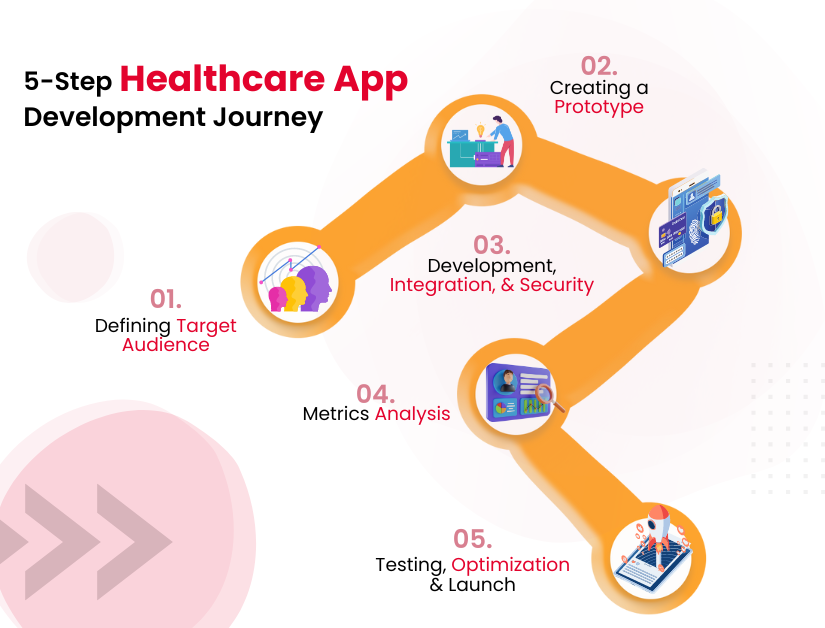
Testing and Quality Assurance
This phase focuses on ensuring the app functions flawlessly across different devices, operating systems, and scenarios. Conduct comprehensive testing to identify and fix any bugs or issues. Test for functional correctness, performance, security vulnerabilities, and compatibility.
Utilize various testing methodologies such as manual testing and automated testing to ensure the app meets the highest quality standards. Involve a dedicated quality assurance team to conduct rigorous testing and ensure a robust and error-free healthcare app.
Deployment and Launch
Once the app has passed all testing stages, it is ready for deployment. Prepare the app for submission to relevant app stores, such as the Apple App Store and Google Play Store. Follow the guidelines and procedures provided by each app store to ensure a smooth submission and approval process.
Ensure compliance with regulatory requirements, such as HIPAA, to maintain the security and privacy of user data. Prepare marketing materials, including app descriptions, screenshots, and promotional assets, to maximize the app’s visibility upon launch.
Post-Launch Maintenance
After the app is launched, the work doesn’t stop. Continuous maintenance and updates are crucial for the long-term success of the healthcare app. Monitor user feedback, reviews, and analytics to identify areas for improvement and address any bugs or issues that arise.
Regularly release updates to introduce new features, enhance usability, and improve security. Stay up to date with the latest industry trends and technological advancements to ensure the app remains relevant and competitive in the ever-evolving healthcare landscape.
Choosing a Healthcare App Development Company
When looking to build a healthcare app that helps users get access to their medical information, you’ll want to work with a reliable healthcare app development company. But, finding one is where most prospects would go wrong. Here are some tips to help you find a reliable medical app development partner to work with:
Expertise in Healthcare App Development
Look for a company that specializes in healthcare app development. Verify their track record and experience in developing similar apps. Consider their portfolio and case studies to assess the quality and functionality of their previous projects. A company with domain expertise will have a better understanding of healthcare regulations, security requirements, and industry-specific challenges.
Understanding of Compliance and Regulations
Compliance with healthcare regulations, such as HIPAA (Health Insurance Portability and Accountability Act), is paramount when handling sensitive patient data. Ensure that the app development company has a deep understanding of these regulations and adheres to the necessary compliance standards. A reputable company will prioritize data security, encryption, and privacy to protect patient information.
Technical Proficiency and Innovation
Assess the company’s technical capabilities and expertise. Look for a team with experience in developing robust, scalable, and secure mobile and web applications. Consider their proficiency in relevant technologies, programming languages, frameworks, and platforms (iOS, Android, etc.). Additionally, inquire about their ability to integrate with external systems like electronic health records (EHR) or wearable devices. An innovative approach to technology and the ability to leverage emerging trends can set a company apart from the competition.
User Experience (UX) Design
A well-designed healthcare app should prioritize user experience. Evaluate the company’s UX design capabilities by reviewing their previous app interfaces and evaluating their usability. The app should have an intuitive and user-friendly interface that caters to the specific needs of your target audience. Look for a company that incorporates user-centered design principles, conducts usability testing, and focuses on creating engaging and visually appealing interfaces.
Project Management and Communication
Clear and effective communication is vital for a successful app development project. Assess the company’s project management methodologies and communication practices. A company that follows an agile development approach can ensure transparency, collaboration, and timely delivery. Regular updates, progress reports, and frequent communication will help you stay informed about the project’s status and make necessary adjustments if needed.
Client References and Testimonials
Request client references or check for testimonials from previous clients. Reach out to their clients and inquire about their experience working with the app development company. Ask about the company’s professionalism, responsiveness, adherence to timelines, and the quality of the delivered product. Feedback from previous clients can provide valuable insights into the company’s capabilities and client satisfaction levels.
Post-Development Support and Maintenance
A healthcare app requires ongoing support and maintenance even after its launch. Inquire about the company’s post-development support and maintenance services. Understand their approach to bug fixes, updates, and enhancements. A reliable app development company will provide timely support, ensure regular updates to address any issues and stay available to assist with future enhancements or feature additions.
Cost and Timeline
While cost shouldn’t be the sole determining factor, it’s important to consider the budget and timeline for your project. Discuss the project requirements with the app development company and obtain a detailed proposal outlining the estimated costs, development timeline, and payment terms. Compare these proposals from different companies while considering their expertise and the value they bring to the table. The team at Webguruz can help you get a Healthcare app made at affordable prices.
FAQs
What is a healthcare app?
Healthcare apps are software programs that can help patients, providers, and the other hospital staff conduct a variety of medical activities including medication administration, monitoring, maintaining a medical schedule, recording health-related data, educating about good health practices, and more. These apps can be used on a smartphone and other IoT devices like wearables, etc.
How do I create a healthcare app?
Creating a healthcare app is a process that involves multiple steps. From in-depth market analysis to identifying the audience, choosing the app type you wish to develop, working on the UI/UX part, making it secure, testing the app, and the final launch, there’s a whole sequence of steps that are involved in the healthcare app development process.
How much does it cost to develop a healthcare app?
The cost of developing a basic native healthcare mobile app may anywhere be between $50,000 and $80,000. If you are looking to create a cross-platform healthcare app, with several features, it may cost upwards of $150,000 or more. When you add the app design services, different forms of testing, and other things, the cost can again rise substantially to upwards of $300,000.
What are the top healthcare app developers?
A general Google Search will leave you with a plethora of Healthcare Mobile App Development Services providers. However, with an in-depth look at the services and value they have to offer, you can easily guess which ones to work with. Webguruz Technologies have expertise in both native and cross-platform mobile app development services. We can help you build interactive healthcare apps at an affordable price.
How to design a mobile health app?
Designing a mobile health app in general is subject to a variety of stringent regulations and approval processes. From defining the app’s objective to creating user personas, developing the entire information architecture, wireframing, prototyping, Usability testing, accessibility considerations, and improvements based on user feedback and behavior, there’s a lot that goes into the healthcare app design process.
In essence, designing a mobile health app involves creating a balance between functionality, usability, aesthetics, and user needs. If you need help with the app design process, the team at Webguruz can help you.
Why do we need Healthcare app development?
Healthcare Web Application Development and Mobile app development can help you in a myriad of ways. Here is a brief take on the benefits that a typical healthcare app can bring along:
- Helping with health-related data gathering
- Providing regular alerts about medicine timings and exercise schedules
- Options for telemedicine and remote monitoring
- Improved communication between the healthcare administrative staff and patients
- Significant time and cost savings
- Increased communication between the patients and providers
Get in Touch!
Related Posts
Stay updated and join the buzz with these topics





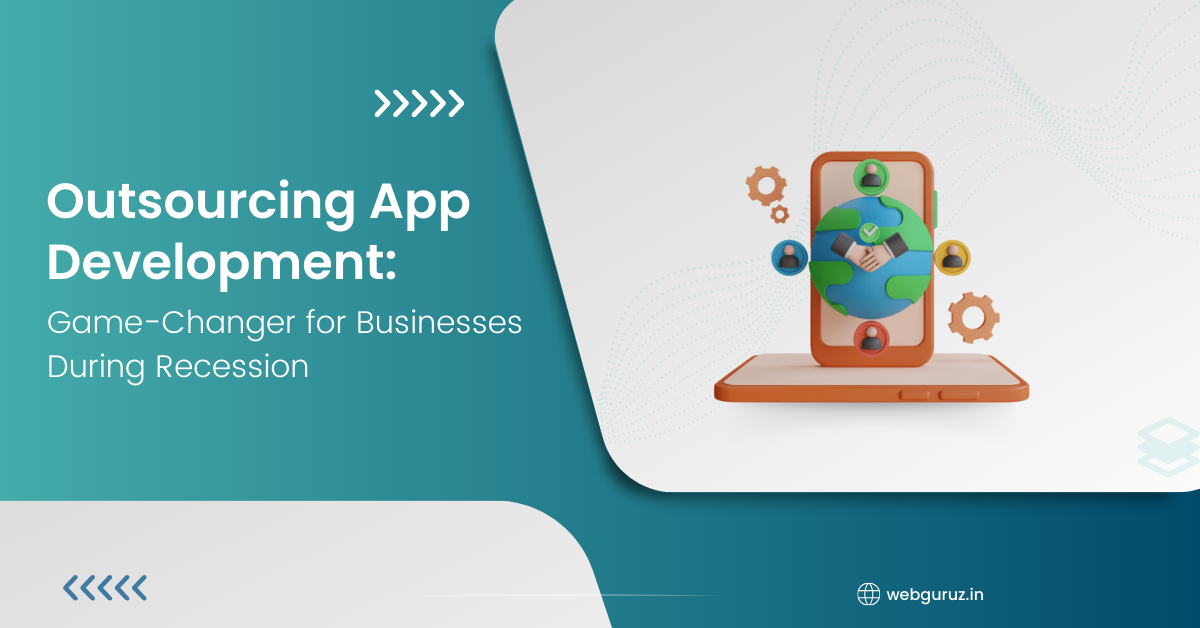

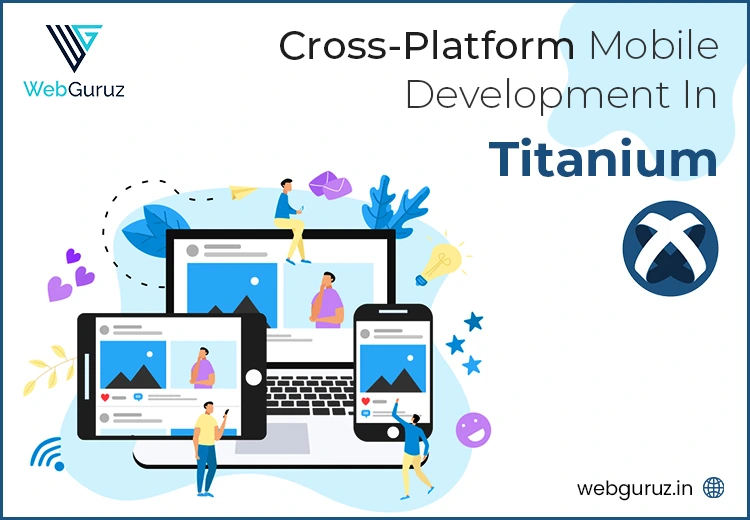
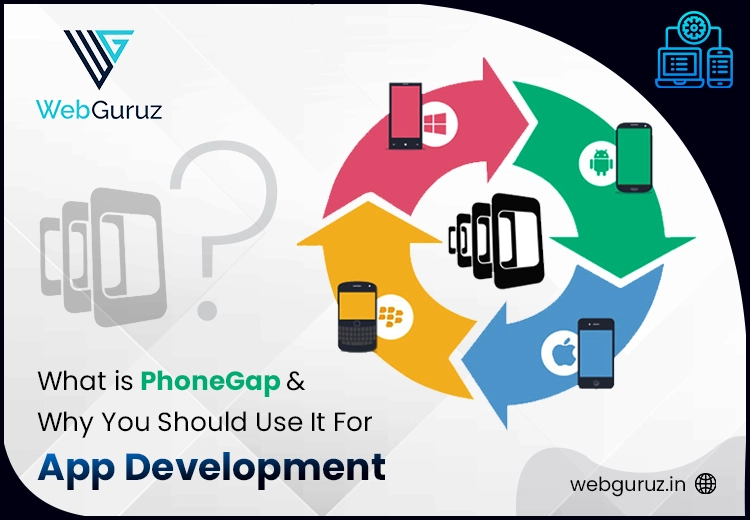

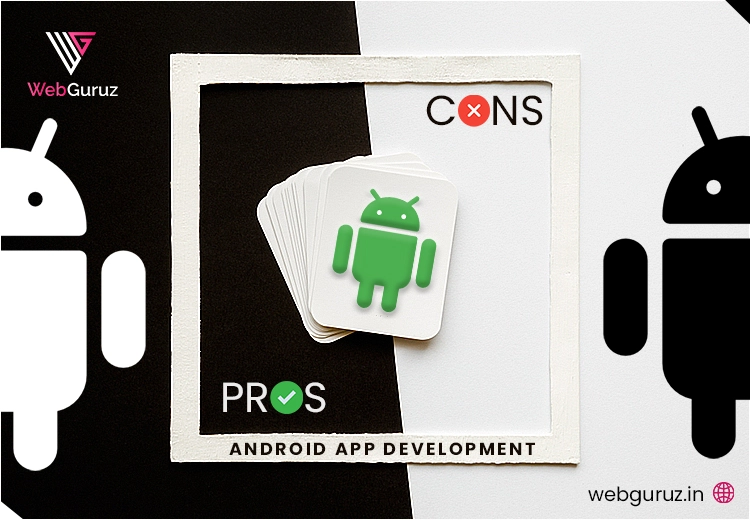





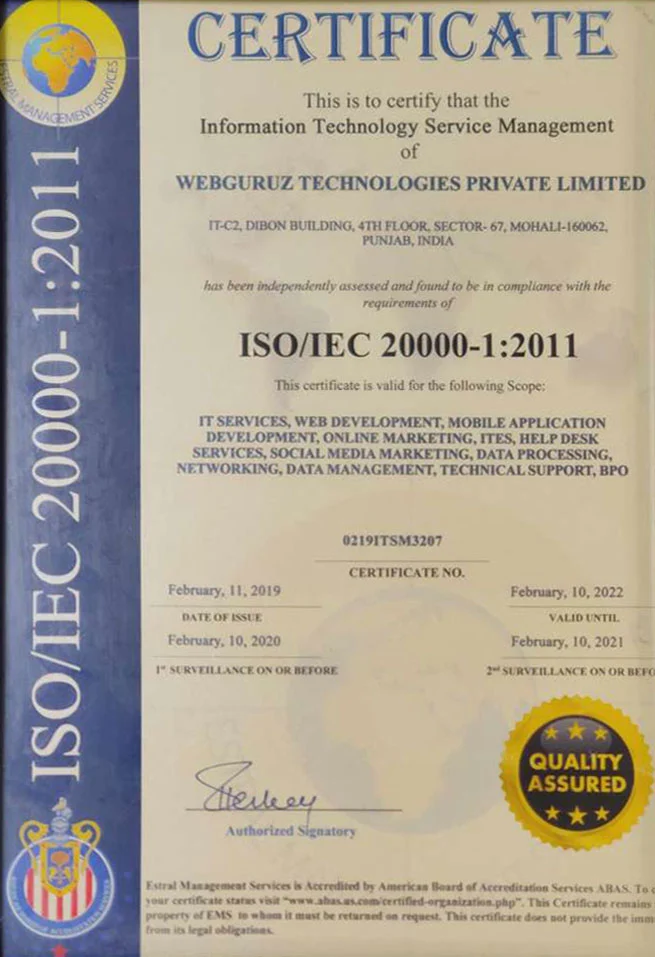


.webp)
